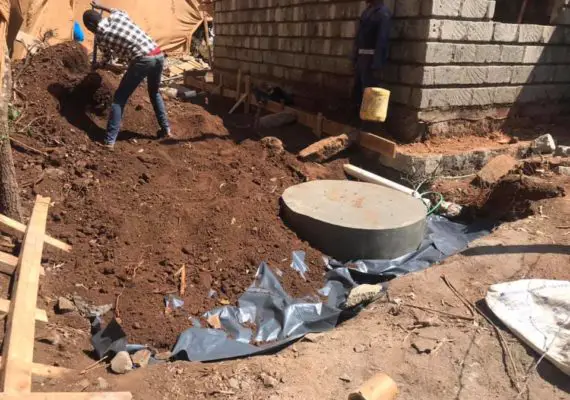What Is A Yard Drain? Difference Between A Yard Drain And A French Drain?
What Is A Yard Drain?
A yard drain, also known as a catch basin, is a drainage system that helps to prevent water buildup in your yard.
It collects excess surface water from rain and snowmelt and redirects it away from the area through a pipe or underground channel, usually sloping away from the basin.
This prevents the pooling of water in areas where you do not want it, like near walkways or buildings. Yard drains are effective at reducing standing water and preventing potential flooding.
What Is The Difference Between A Yard Drain And A French Drain?
A yard drain is designed to move water that is at surface level away from a home or structure, while a French drain is a much more comprehensive underground drainage system that facilitates the movement of subsurface water.
The yard drain usually consists of a PVC pipe connected to a grate, while the French drain requires an excavation and trench along with various materials such as gravel, crushed stone, and perforated pipe in order to create an efficient pathway for the water to travel.
Yard drains are effective for small-scale projects such as gutter downspouts and driveway run-off but generally aren’t sufficient for larger-scale drainage issues like ground saturation.
French drains on the other hand offer long-term solutions by redirecting groundwater away from structures and protecting them from potential flooding.
What Are The Different Types Of Yard Drains?
Yard drains come in different types and forms, with dry wells, French drains, and downspout/sump connections all being effective solutions for managing the drainage of water away from your property.
Dry wells are pits or boxes located underground filled with gravel that collects water and carries it away.
French drains are trenches filled with stone and covered by a perforated pipe which allows water to enter but keeps soil particles out.
Downspout/sump connections direct rainwater collected by a home’s gutter system through piping into larger drainage systems such as storm sewers or rivers, while sump pumps help redirect this same water away from the foundation of a home.
With the right combination of these three-yard drain types, you can rest easy knowing your outdoor space is safe from pooling water.
What Size Pipe For Yard Drainage?
For yard drainage, it is recommended to use either 3”, 4”, or 6” drainage pipes as these pipes are readily available and come with applicable fittings that make the installation process much easier.
These sizes can handle most residential and light commercial projects efficiently. It is important to ensure that the correct pipe size is used for the right project in order to provide long-term effectiveness and avoid clogs.
What Is The Best Drain For The Yard?
When choosing a drain for your yard, the best option is the Slot Drain System. This system is easy and low-maintenance and will last you for years to come.
Unlike a traditional trench drain which can be difficult to install and maintain, the Slot Drain System offers an easier solution that requires less time and effort.
It also has excellent drainage capabilities, allowing it to collect more water during storms than other types of drains. Additionally, it’s made of high-quality materials that are built to last for years without cracking or rusting.
In conclusion, the Slot Drain System is not only efficient but also long-lasting – making it the ideal choice when looking for a reliable drainage system for your property.
![Advantages of Biodigester + How Biodigester Works [A Simple Guide]](https://www.hpdconsult.com/wp-content/uploads/2019/06/maxresdefault-1-570x400.jpg)

